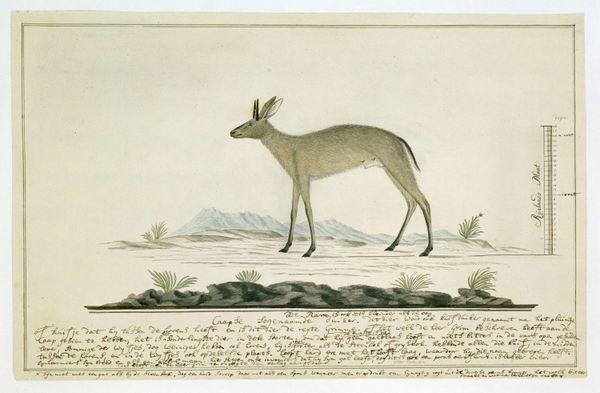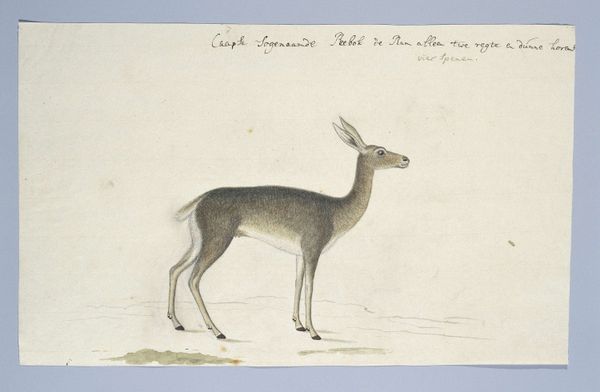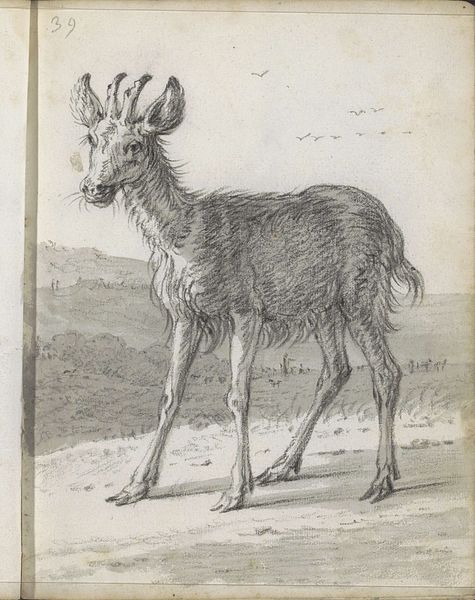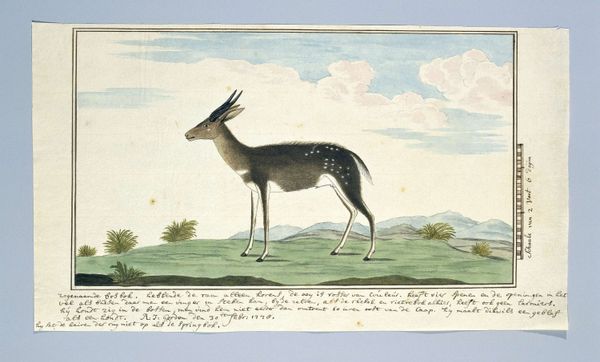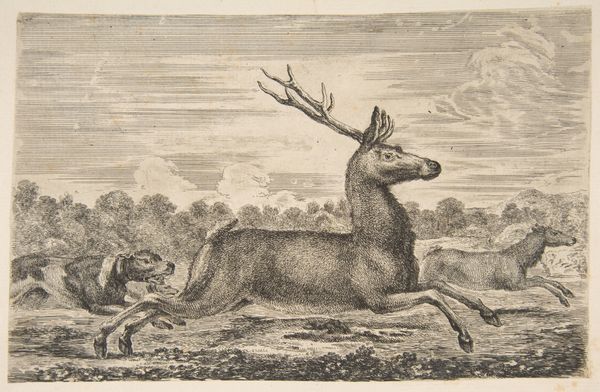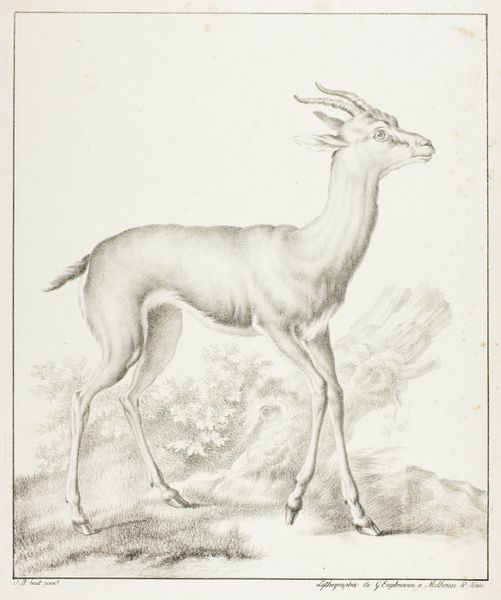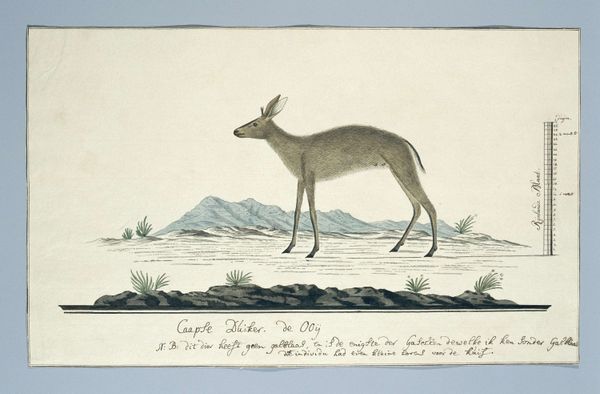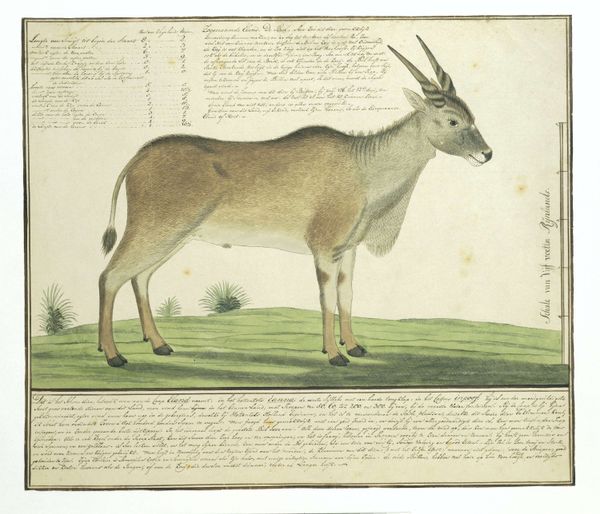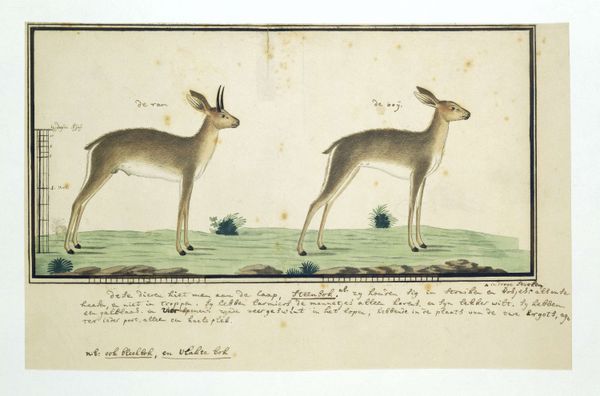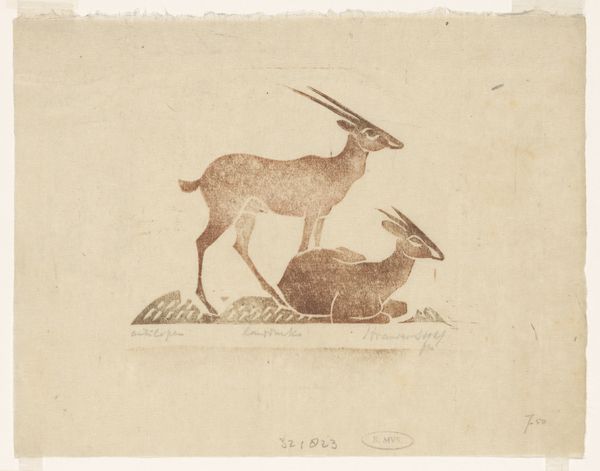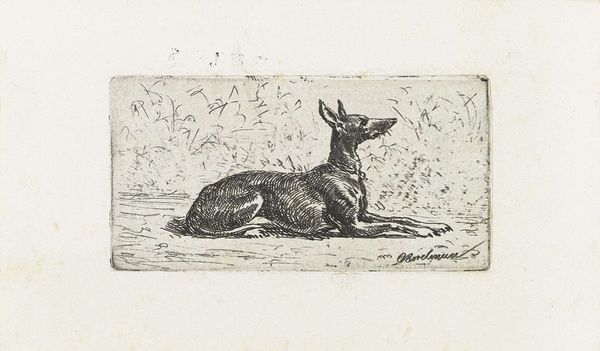
#
toned paper
#
pencil sketch
#
personal sketchbook
#
coloured pencil
#
watercolour bleed
#
watercolour illustration
#
sketchbook art
#
botanical art
#
watercolor
#
warm toned green
Dimensions: height 92 mm, width 146 mm
Copyright: Rijks Museum: Open Domain
This watercolor of a Guinees Jufferbokje, or a Grimm’s Duiker, was made by Aert Schouman, a Dutch painter, around the 18th century. The painting’s translucent quality comes from the watercolor technique itself, where pigments are suspended in water, allowing for delicate washes and subtle gradations of color. Schouman has also used some gouache to create the body of the Duiker. The thinness of the paint allows the paper's surface to contribute to the overall effect. The layering of washes creates depth and form, as seen in the animal’s body and the background landscape. Schouman masterfully depicts the soft, muted tones of the animal's coat, blending different hues to create a lifelike representation. This technique captures the nuances of light and shadow, adding to the naturalism of the portrayal. Schouman was known for his natural history illustrations, often commissioned by wealthy patrons to document exotic animals and plants. The image itself reflects an era when the natural world was increasingly subject to scientific scrutiny and colonial exploitation.
Comments
No comments
Be the first to comment and join the conversation on the ultimate creative platform.
